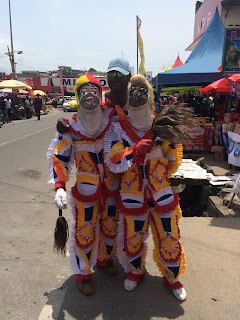The xylophone has hands down become my favorite instrument since coming to Ghana (sorry saxophones, you'll always have a special place in my heart!). You can listen to the first song I learned right here! It's called "Kontomblabo" (although to be honest I have no idea how to spell it!).
All xylophone songs have a story behind them and the story behind "Kontomblabo" is the discovery of the xylophone. Legend has it that there was a hunter who heard a wonderful song. He followed the sound and saw a dwarf playing an instrument he had never seen. The dwarf was playing "Kontomblabo." The hunter asked the dwarf to give him the xylophone, but when the dwarf refused the hunter killed him and stole the xylophone and thus the xylophone found its way into the hands of the people of northern Ghana!
The other version of the story is that it got traded for something several centuries ago and that it originally is from Cote d'Ivoire. Many Ghanaians, however, choose to believe the legend instead. No matter how it came into existence in Ghana, I think xylophones are awesome! Although commonly regarded as a "children's toy" in the U.S.A., xylophones are a very important part of Ghanaian traditional music. They most commonly have a pentatonic scale (five distinct notes) and often range from the 14-22 keys. Also, they are struck with beaters (as opposed to "sticks" which is what I had previously called them).





















